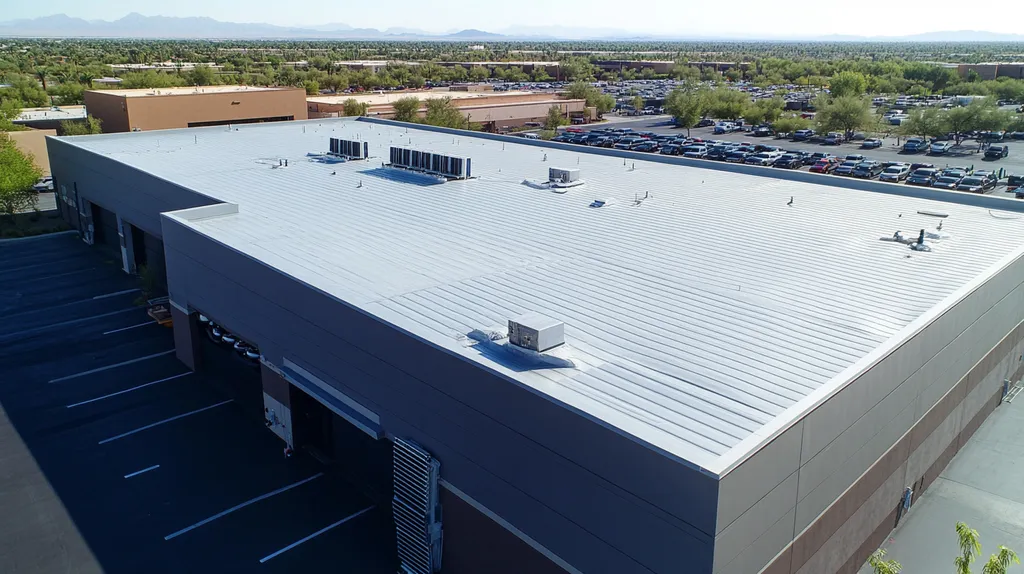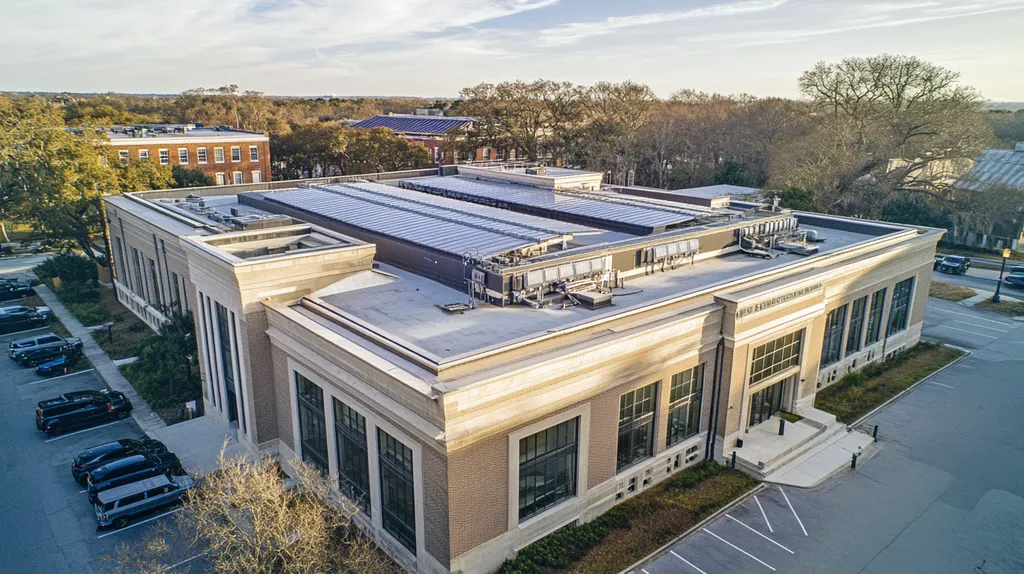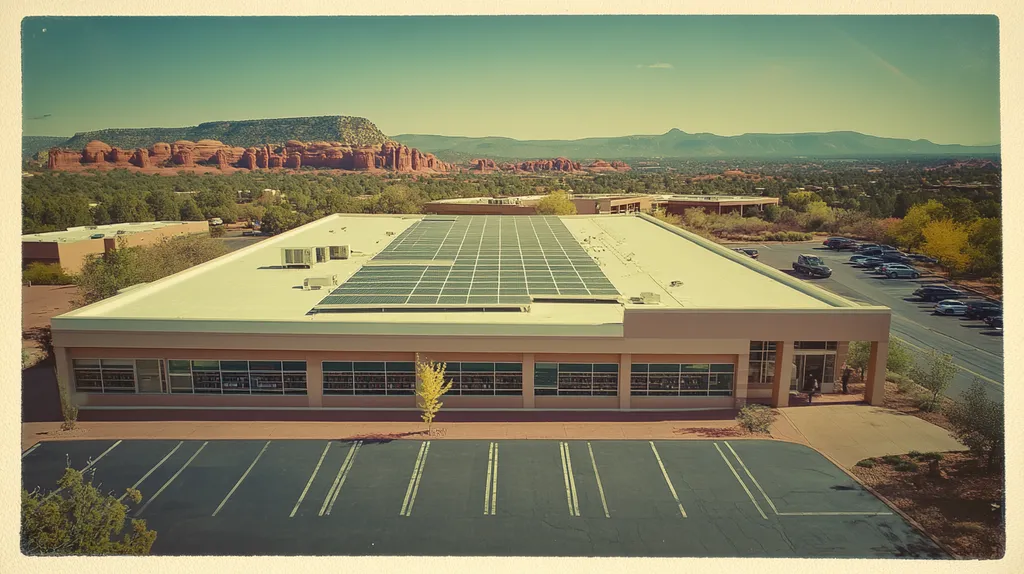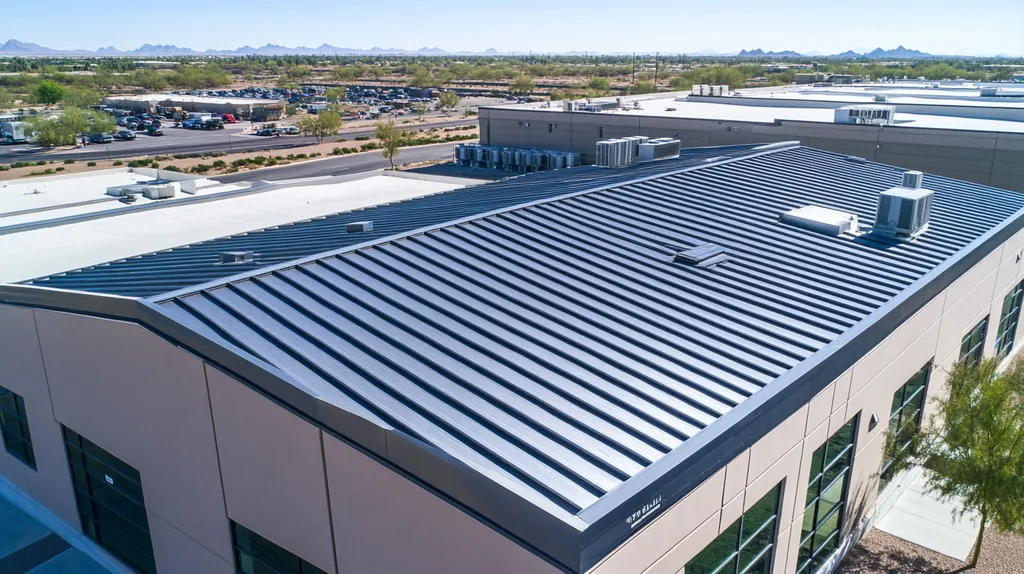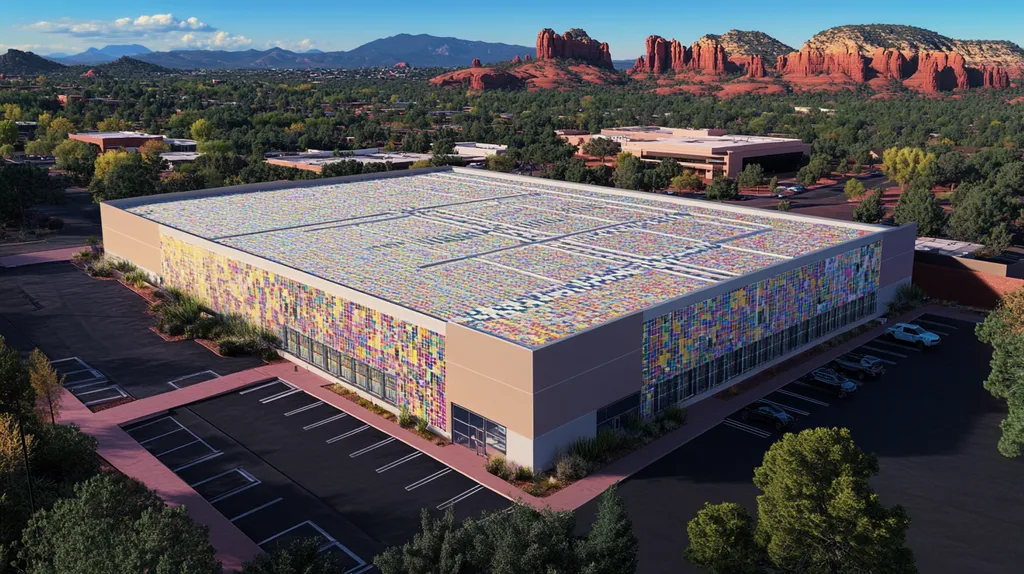In commercial roofing, contractor non-compliance with building codes leads to over $1.2 billion in annual repair costs across the United States. Recent studies indicate that 25% of commercial roofs fail to meet local code requirements, creating significant safety and liability risks for property owners.
Understanding the complexities of roofing compliance has become increasingly critical as regulations evolve and construction technologies advance. This comprehensive guide examines common misconceptions, practical implications, and evidence-based solutions for ensuring contractor adherence to commercial roofing codes.
By analyzing both the financial impact of non-compliance and implementing proper verification methods, property owners can better protect their investments while maintaining structural integrity and safety standards.
SECTION 1: COMMON MISCONCEPTIONS
Misunderstandings surrounding commercial roofing codes can surprisingly jeopardize property investments and occupant safety. A considerable number of property owners erroneously assume that building codes are standardized across the United States. This misconception can lead to costly compliance failures and even catastrophic safety risks. Additionally, some individuals believe that any roofing material will suffice, overlooking vital criteria such as local climate and specific building types. Lastly, the notion that inspections are optional can expose properties to hidden hazards and legal complications. Addressing these misconceptions is critical for ensuring compliance and protecting valuable investments.
Local Codes Are Uniform Nationwide
A widespread misunderstanding is that roofing codes are consistent from coast to coast. In reality, local codes can differ dramatically from one municipality to another. These regulations reflect regional influences such as climate conditions, available building materials, and historical construction practices.
For example, a roofing system that meets code in a temperate area may not perform adequately in regions prone to extreme weather, like hurricanes or heavy snowfall. Ignoring these regional specifics can result in roofs that fail to effectively protect the building and its occupants.
Property owners are encouraged to consult local building authorities or work with a licensed roofing contractor knowledgeable in local codes. This ensures roofing projects meet all necessary regulations and standards.
Neglecting local code requirements can result in serious repercussions, including hefty fines, increased liability, and accelerated roof failure. Familiarity with local codes is not merely a legal requirement; it is essential for safeguarding investments.
Any Roofing Material Meets Code Requirements
Another common misconception is that any roofing material can be classified as compliant, provided it meets basic specifications. However, materials must be suitable for the building type, location, and environmental conditions to genuinely satisfy code requirements.
For instance, while asphalt shingles may be adequate in some locales, they could easily fail in areas subject to heavy rainfall or high winds. The use of unsuitable materials can lead to swift deterioration and serious safety risks.
Furthermore, many codes stipulate that materials undergo stringent testing for essential qualities such as fire resistance, wind uplift, and thermal performance. Disregarding these testing requirements can have dire consequences, including denied insurance claims following damage.
To ensure full compliance, property owners should engage roofing professionals who are well-versed in both materials and relevant codes. This collaboration is key for selecting the right materials that meet local requirements and enhance overall building integrity (source: Construction Specifier).
Inspections Are Optional for Compliance
Believing that inspections are optional represents a dangerous misconception that could jeopardize both safety and legal compliance during roofing projects. Many jurisdictions require inspections at various stages of the roofing installation process.
Inspections serve a crucial role in verifying that all facets of a roofing system meet local code standards and are carried out correctly. Without these essential checks, hidden issues can surface, ultimately damaging the roof’s integrity and leading to exorbitant repair costs later.
Failing to conduct necessary inspections also risks non-compliance with building codes, potentially resulting in fines or legal challenges. This oversight can complicate the sale of properties if unresolved code violations are present.
Therefore, engaging licensed inspectors and understanding the inspection process is vital for compliance. Regular inspections do not merely constitute bureaucratic red tape; they are protective measures that secure investments and ensure safe environments for occupants.
SECTION 2: PRACTICAL IMPLICATIONS
The importance of adhering to roofing codes is paramount for protecting investments and ensuring safety. When roofing contractors neglect compliance, the consequences can be severe, leading to financial losses and compromised building integrity. According to the National Roofing Contractors Association (NRCA), failing to comply with codes can increase insurance claims by as much as 40%. This section outlines the critical implications of compliance on material selection, the risks associated with non-compliant installation, and the potential impacts on structural integrity and safety.
Impact on Roofing Material Selection
Selecting appropriate materials for a commercial roofing project is essential, and compliance with roofing codes plays a crucial role in this decision. Many property owners may be tempted to choose cost-effective materials without fully understanding the pertinent code requirements. This shortsightedness can result in the use of materials ill-suited for local climate conditions or weight specifications.
For example, the installation of inadequate insulation may breach energy codes and lead to early roof deterioration. It is imperative that selected materials comply with both industry standards and applicable regional codes.
Neglecting these standards can result in higher energy expenses and possibly necessitate expensive repairs or replacements. Property owners must ensure their contractors provide documentation verifying that the materials used align with local codes.
Ultimately, adherence to compliance standards significantly affects the longevity and performance of the roofing system, highlighting the necessity of thorough verification prior to project commencement.
Consequences of Non-Compliant Installation
Failing to adhere to compliant installation practices can yield serious repercussions. Poorly installed roofing systems are more vulnerable to leaks, structural damage, and costly repairs. Industry reports estimate that improper installation accounts for up to 20% of all roofing failures.
If contractors overlook code requirements, they might employ incorrect fastening techniques or neglect crucial moisture barriers. Such mistakes can lead to leaks that compromise interior spaces and require substantial remediation efforts.
Additionally, discovering non-compliance after installation can lead to warranty claims being denied, placing the financial responsibility for repairs on property owners. This underscores the importance of systematic contractor compliance assessments throughout the installation process.
Thus, ensuring compliance during installation is not merely a legal obligation—but a vital strategy for safeguarding both financial investments and the well-being of building occupants.
Effects on Structural Integrity and Safety
The structural integrity of a building is foundational to safety, and roofing codes are specifically designed to maintain this integrity. Non-compliant installations can introduce weaknesses in a structure, particularly in regions susceptible to severe weather or seismic events.
For instance, roofs that fail to meet weight-bearing codes may collapse under the stress of heavy snow accumulation or standing water, posing significant risks to the safety of all individuals inside the building.
The implications of non-compliance extend beyond immediate safety hazards; they can result in substantial legal liabilities for property owners. Insurance providers may also refuse coverage for damages that arise from non-compliant roofing systems, compounding financial risks.
Thus, adherence to roofing codes is essential—not just for satisfying legal requirements, but also for ensuring the long-term safety and durability of a commercial property.
SECTION 3: COST OF MISINFORMATION
Misinformation regarding commercial roofing compliance can have severe financial consequences. A troubling finding indicates that 70% of roofing contractors frequently neglect code requirements. This oversight results in hidden costs that can significantly disrupt budgets and create legal vulnerabilities for property owners. Understanding these financial implications is essential for protecting investments and ensuring smooth operations over the long term.
Financial Penalties for Non-Compliance
Neglecting to comply with commercial roofing regulations can lead to substantial fines. Municipalities enforce strict codes to maintain safety and structural durability. When violations occur, contractors can face fines that quickly escalate, potentially reaching tens of thousands of dollars.
Additionally, if a building is discovered to be non-compliant, property owners may be compelled to rectify the situation immediately. This often means incurring unexpected costs for necessary corrections. Compliance should be viewed not merely as a regulatory checkbox but as a financial shield against sudden expenditures.
In many areas, permits are a prerequisite for any roofing project. Failure to secure these permits can lead to further fines or even mandate complete reworks, which compound expenses. Therefore, thoroughly vetting contractors serves as an effective strategy to protect against unnecessary financial burdens.
Ultimately, the cost of ignoring roofing compliance can accumulate quickly, leading to direct financial losses for property owners and emphasizing the need to confirm contractor adherence to local codes.
Increased Maintenance and Repair Costs
Misinformation surrounding roofing compliance often results in subpar installations that may appear satisfactory initially but demand greater maintenance over time. Roofs constructed through non-compliant practices can deteriorate swiftly, leading to unexpected repair expenses.
For example, inadequately insulated roofs may not meet energy standards, causing increased utility bills due to inefficient temperature regulation. As energy costs rise, property owners can find their operational budgets squeezed, diverting funds from other essential areas.
Moreover, utilizing inferior materials without proper compliance can lead to premature roof failures. A roofing system designed to last twenty years might require replacement in a fraction of that time, leading to unnecessary labor and materials expenses. Compliance oversight can prevent such costly outcomes.
In the long run, the financial strain from elevated maintenance and repair costs affects not only immediate budgets but also the property’s overall market value. Conducting regular inspections and adhering to building codes is crucial for ensuring a roofing system’s longevity and efficiency.
Potential Legal and Liability Issues
Legal ramifications present another significant concern linked to misinformation in roofing compliance. If a roof fails due to improper installation or failure to adhere to codes, property owners risk civil lawsuits from tenants or employees, bringing potential financial and reputational damages.
Additionally, insurance providers might hesitate to cover damages stemming from non-compliant work. When contractors disregard regulations, if a defect or incident arises, insurance claims can be denied, leaving property owners responsible for substantial repair costs.
Furthermore, municipal authorities may insist on resolving liability claims linked to a contractor’s non-compliance. Navigating these legal challenges can be time-consuming and costly, compounding issues for property owners.
Investing time and resources in verifying contractor compliance is crucial to mitigating such risks. Establishing clear lines of communication and understanding compliance requirements can help prevent legal complications and safeguard investments.
SECTION 4: REALITY CHECK
The stakes of contractor compliance with commercial roofing codes are alarmingly high. Recent studies show that approximately 25% of commercial rooftops do not adhere to local building codes, leading to costly repairs and increased liability for property owners. Ignoring compliance can endanger not only the structure but also expose owners to fines and potential legal action. This section will delve into the essential elements of regional building codes, the necessity of routine roof inspections, and the critical role industry standards play in ensuring compliance.
Understanding Regional Building Codes
Regional building codes lay the foundation for compliant construction practices specific to each locality. These codes are shaped by various factors, including environmental conditions, safety regulations, and building materials available in the area. For instance, regions that experience heavy snowfall will have distinct requirements to ensure roofs can withstand those conditions, unlike areas where high winds are a concern.
Adhering to these codes is imperative; failure to do so can result in significant fines and insurance complications. Insurance claims may be denied if the property does not comply with local codes, complicating recovery from storm damage or leaks. Property owners must be proactive in ensuring contractors are not only promising compliance but are wholly compliant.
Verification of contractor compliance should involve obtaining necessary documentation and certifications that demonstrate adherence to local standards. Regular communication regarding code updates ensures that all parties involved remain informed and aligned on compliance requirements.
Importance of Regular Roof Inspections
Routine roof inspections are pivotal in maintaining compliance with commercial roofing codes. These evaluations assure stakeholders that the roofing system operates as intended and adheres to mandatory standards. Consistent assessments can identify small problems before they evolve into major, costly repairs, helping to sustain the overall health of the property.
Research indicates that buildings with consistent inspection schedules can decrease premature roof failures by as much as 50%. These inspections serve as an early detection system for potential code violations, thus minimizing risks while ensuring ongoing compliance.
Moreover, inspections should be conducted by qualified professionals trained to recognize local compliance requirements. Property owners often overlook this crucial aspect, relying on untrained contractors or staff who may not possess the expertise to spot compliance issues. By prioritizing regular inspections, property owners protect not only their investments but also the safety of those who occupy or work within the building.
Role of Industry Standards in Compliance
Industry standards are critical in ensuring roofing projects meet established safety and quality benchmarks. Organizations like the American Society for Testing and Materials (ASTM) provide essential guidelines that help contractors and property owners navigate the complex landscape of compliance.
These standards include specifications for material quality, installation protocols, and maintenance practices that must be followed to minimize the risk of future failures. Complying with recognized industry standards saves time and resources while ensuring the longevity of roofing systems.
However, property owners often mistakenly believe that meeting local codes inherently ensures compliance with broader industry standards. Such assumptions can lead to significant oversights. Understanding both local codes and industry standards is essential for effective roofing project management.
Engaging knowledgeable professionals in both the assessment and execution phases of roofing projects guarantees that all necessary standards are met. Bridging local codes with industry standards establishes a robust framework for compliance, ultimately enhancing the longevity and safety of the roofing system.
SECTION 5: EVIDENCE-BASED ALTERNATIVES
In the complex landscape of commercial roofing, adherence to regulatory codes is not just a bureaucratic requirement; it is essential for maintaining structural integrity and ensuring occupant safety. Non-compliance can lead to substantial financial liabilities and hazardous conditions. To mitigate these risks, leveraging advanced technology, collaborating with knowledgeable professionals, and strictly following manufacturer specifications are crucial strategies. These approaches not only safeguard investments but also promote the longevity of roofing systems.
Using Advanced Technology for Compliance
Advanced technology is transforming the way compliance with roofing codes is verified. Tools like Building Information Modeling (BIM) and aerial drones empower professionals to conduct comprehensive assessments of roofing systems. BIM allows for detailed planning and visualization, ensuring that every element of the roofing design aligns with regulatory requirements.
Drones facilitate quick, high-resolution surveys of rooftops, enabling real-time identification of potential compliance issues. This proactive approach helps contractors address concerns before they can escalate into serious problems. Furthermore, compliance tracking software provides a centralized hub for managing relevant documentation, reinforcing adherence to both local and national building codes.
Integrating these technologies not only enhances the accuracy of assessments but also fosters clear communication among all stakeholders involved in roofing projects. By investing in advanced tools, property owners can confidently partner with contractors focused on maintaining compliance, resulting in safer and more effective roofing solutions.
Collaborating with Code-Savvy Professionals
Partnering with code-savvy professionals is essential for navigating the intricacies of commercial roofing compliance. By consulting with compliance experts and experienced roofing consultants, property owners can significantly reduce risks associated with non-compliance. These specialists possess comprehensive knowledge of local and national regulations and can perform detailed compliance audits to ensure all aspects of the roofing project meet necessary standards.
Their insights can shed light on potential oversights that might impede project timelines or lead to costly adjustments. Education is another critical facet; workshops led by industry experts can enhance the knowledge base of contractors and project managers, ensuring they are equipped to handle relevant codes effectively.
Emphasizing collaboration with informed professionals cultivates a proactive compliance culture that benefits all parties involved. This strategic partnership increases the likelihood of project success while minimizing the potential complications related to regulatory compliance.
Adhering to Manufacturer Specifications
Strict adherence to manufacturer specifications is a fundamental yet often overlooked strategy for ensuring roofing code compliance. Each roofing product is accompanied by guidelines that detail installation, maintenance, and performance criteria essential for effective operation. Ignoring these specifications risks not only regulatory non-compliance but also the overall functionality of the roofing system.
Manufacturers provide documentation assuring that their products meet specific codes and standards. Contractors who follow these guidelines can ensure their work aligns with accepted industry practices. For example, selecting the appropriate roofing membrane based on the local climate can prevent premature system failures and associated costs.
Moreover, compliance with manufacturer’s specifications enhances warranty claims, protecting property owners from future liabilities. If improper installation occurs and fails to meet these criteria, warranty coverage may be denied. Therefore, integrating manufacturer recommendations while planning and executing roofing projects is vital for both compliance and the long-term performance of the building.
SECTION 6: TEST AND VERIFY
Verifying compliance with commercial roofing codes is critical for property owners. Non-compliance can lead to significant repair costs, safety hazards, and even legal issues. Roofs that don’t adhere to code can result in leaks, structural damage, and compromised occupant safety. This section highlights essential methods for verifying contractor compliance through research reports, the use of independent testing laboratories, and local authority engagement.
Utilizing Code Compliance Research Reports
Code compliance research reports are vital resources for confirming that roofing materials meet industry standards. These reports provide detailed evaluations of a material’s performance under specific conditions and its compliance with relevant building codes.
Property owners can use these reports to verify that materials specified by contractors meet necessary standards. For instance, referencing International Code Council (ICC) evaluation reports can help affirm the credibility of roofing products.
Organizations such as Underwriters Laboratories (UL) offer comprehensive testing regulations and performance certifications. Accessing these authoritative reports empowers property owners to make informed choices and effectively mitigate potential risks.
By leveraging these research reports, property managers reinforce the credibility of their materials while emphasizing compliance’s crucial role in roofing projects.
Leveraging Independent Testing Laboratories
Independent testing laboratories play a crucial role in validating the performance and compliance of roofing materials. These facilities conduct thorough, unbiased assessments to determine if materials meet required standards.
For example, roofing materials can undergo various tests, such as moisture resistance, insulation properties, and wind uplift performance. The results of these evaluations provide essential insights into how roofing systems will function over time.
Partnering with reputable independent laboratories ensures that property owners can confirm that contractors are using materials that are both compliant and reliable. This due diligence significantly reduces the risk of future failures and costly maintenance.
Overall, utilizing independent testing facilities is a proactive strategy to enhance compliance while fostering overall project reliability.
Verifying Compliance with Local Authorities
Engaging with local authorities is a necessary step in verifying that roofing contractors comply with regional codes and regulations. Local building departments often require permits and inspections for roofing work, which are essential for maintaining community safety standards.
Property owners must ensure that contractors secure all necessary permits before beginning a project. This process includes conducting multiple inspections throughout the roofing installation to identify any compliance issues early.
Failure to obtain the appropriate permits can result in substantial fines and project delays. Furthermore, roofs installed without local authority approval may not be covered by insurance, leading to additional financial risks.
Therefore, verifying compliance with local authorities not only protects properties but also ensures adherence to community standards and regulations.
The Bottom Line
With over $1.2 billion in annual repair costs attributed to non-compliant commercial roofing, the stakes for proper contractor verification have never been higher.
Research indicates that implementing comprehensive compliance verification protocols can reduce roofing failures by up to 70% while extending system lifespan by 25-40%.
Property owners must leverage available tools including code compliance reports, independent laboratory testing, and local authority engagement to ensure contractor adherence to regulations.
The financial implications of overlooking compliance – from denied insurance claims to structural failures – far outweigh the initial investment in proper verification procedures.
As building codes continue evolving with new technologies and safety standards, maintaining vigilant oversight of contractor compliance remains critical for protecting commercial property investments.
FREQUENTLY ASKED QUESTIONS
Q. Are commercial roofing codes uniform across the country?
A. No, commercial roofing codes vary significantly by location, influenced by regional climate and safety factors. Property owners should verify local regulations to ensure compliance and avoid costly pitfalls.
Q. How do roofing codes affect material selection for an industrial roof?
A. Roofing codes dictate acceptable materials based on environmental conditions, ensuring they provide adequate protection and energy efficiency. Neglecting these standards can lead to premature failures and increased costs for property owners.
Q. What penalties arise from non-compliance with commercial roofing codes?
A. Non-compliance can lead to significant financial penalties, including fines and mandatory corrections. Property owners may also face increased insurance costs and possible legal liabilities related to safety violations.
Q. Why are regular roof inspections necessary for commercial roofs?
A. Regular inspections help identify potential compliance issues and structural weaknesses early. This proactive approach can prevent costly repairs, ensuring safety and prolonging the lifespan of the roofing system.
Q. How do industry standards relate to roofing code compliance?
A. Industry standards complement local codes by setting benchmarks for quality and safety. Understanding both ensures property owners avoid oversights that might compromise the integrity of roofing projects.
Q. What role do independent testing laboratories play in compliance verification?
A. Independent testing laboratories validate that roofing materials meet necessary compliance standards through rigorous assessments. Their unbiased evaluations help ensure contractors utilize reliable materials, mitigating risks of future failures.
Q. How can property owners effectively verify contractor compliance with roofing codes?
A. Property owners should engage with local authorities, review compliance reports, and leverage independent testing. This thorough approach helps ensure contractors adhere to regional codes and industry standards, protecting investments.


